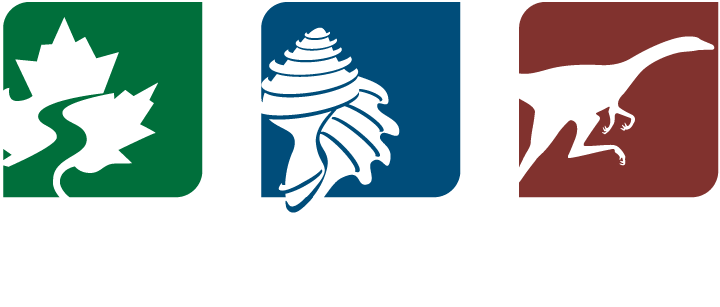Effects of HABs
Algal toxins
HABs can produce different toxins, substances that can make humans and animals sick. Exposure to toxins from HABs can cause many types of symptoms, such as nausea, vomiting, diarrhea, liver damage, or neurological problems. The effects depend on the type of toxin, the amount of toxin, and the duration of exposure.
Toxins from cyanobacterial HABs that typically occur in fresh water, called cyanotoxins, can accumulate in water. Exposure to these toxins can cause gastrointestinal problems, liver damage, and other symptoms.
HABs that form in saltwater (red tides) can poison animals, like fish, birds, and marine mammals. Some fish and shellfish (mollusks) store the toxins from HABs in their tissues. If people or animals eat these fish or shellfish, they can be poisoned. Amnesic Shellfish Poisoning (ASP) and Paralytic Shellfish Poisoning (PSP) are two types of poisoning caused by toxins from dinoflagellates.
How are humans and animals exposed to HAB toxins?
People
People can come into contact with algal toxins in a variety of different ways:
Daily activities
Washing hands, clothes, or dishes in contaminated water or bathing with contaminated water can cause exposure through skin contact or inhalation of aerosols (water droplets suspended in the air).
Using water containing toxins for drinking, cooking, or making beverages, or eating food (like fish or shellfish) from contaminated water can cause exposure through ingestion. Heating or cooking does not destroy algal toxins.
Work and recreation
Skin contact with water containing toxins through swimming, water sports, and commercial activities like fishing and fish farming, which might cause eye, ear, and skin irritation and allergies.
Breathing in aerosols (water droplets suspended in air) containing toxins during work or recreation may cause respiratory irritation or more serious respiratory problems.
Domesticated animals
Pets and livestock can be exposed to algal toxins if they:
Drink, swim, or play in contaminated water.
Eat or lick algae in the water or algae that has become stuck to their fur.
Eat contaminated fish, shellfish, or dead or sick animals that have been exposed to toxins.
Aquatic and marine animals and birds
Aquatic or marine animals may also be exposed by:
Directly ingesting algal cells. This may especially occur in animals that filter-feed, like clams and mussels.
Absorbing algal toxins through their skin, gills, or other tissues.
Consuming other animals that have absorbed algal toxins.
Breathing in aerosols containing toxins.
What are some of the symptoms of HAB toxin exposure?
When people or animals are exposed to the toxins from HABs, they may experience health problems. These health issues can worsen preexisting conditions and pose more significant risks for vulnerable people, particularly for children, the elderly, pregnant women, and individuals with underlying health concerns. In animals, health issues can sometimes be missed.
Some of the symptoms of exposure to HAB toxins are:
General malaise: Fatigue, fever, muscle pain.
Gastrointestinal issues: Nausea, vomiting, diarrhea, abdominal pain or discomfort.
Skin irritation: Skin rashes, itching, redness, and allergic reactions.
Kidney problems: Kidney damage or renal failure.
Liver problems: Hepatitis or elevated liver enzymes.
Cardiovascular effects: Irregular heartbeat, weakness, low blood pressure.
Respiratory problems: Coughing, wheezing, shortness of breath, nose and throat irritation.
Neurological symptoms: Headaches, dizziness, confusion, neurological impairment.
In some cases, exposure to toxins may cause death. Death from poisoning by toxins is much more likely to happen in animals than in people, with aquatic and marine animals being especially vulnerable.
Other ecological impacts of HABs
HABs can have harmful effects in addition to producing toxins. In fact, some HABs do not produce toxins, so their harmful impacts come from their other ecological effects. For example, algal blooms on the surface of the water can be so dense that they can block the sunlight that organisms below the surface need, causing them to die.
Beyond producing toxins, one of the most harmful effects of HABs can be to deplete water of oxygen. When the algae in HABs die, bacteria in the water decompose them. These bacteria can use up all the oxygen in the water, creating “Dead Zones” where fish and other organisms cannot survive. Sometimes, the lack of oxygen caused by HABs can cause dramatic fish die-offs.
Foam produced by dying algae can sometimes coat the plumage of birds, making it difficult for them to fly and causing their feathers to lose their insulating abilities, which can eventually cause them to die.
Development of the Harmful Algal Blooms (HABs) section of the Cayuga Nature Center website was supported by a National Science Foundation grant to Kathryn Fiorella, Christopher Barrett, and Peter McIntyre of Cornell University (BCS 2009658). The views, findings, conclusions, or recommendations expressed in this website do not necessarily represent those of the National Science Foundation.



















